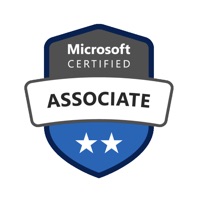
How to Delete Learn Azure AZ-104. save (68.14 MB)
Published by Naveen Karamchetti on 2024-01-21We have made it super easy to delete Learn Azure AZ-104 account and/or app.
Table of Contents:
Guide to Delete Learn Azure AZ-104 👇
Things to note before removing Learn Azure AZ-104:
- The developer of Learn Azure AZ-104 is Naveen Karamchetti and all inquiries must go to them.
- Check the Terms of Services and/or Privacy policy of Naveen Karamchetti to know if they support self-serve subscription cancellation:
- The GDPR gives EU and UK residents a "right to erasure" meaning that you can request app developers like Naveen Karamchetti to delete all your data it holds. Naveen Karamchetti must comply within 1 month.
- The CCPA lets American residents request that Naveen Karamchetti deletes your data or risk incurring a fine (upto $7,500 dollars).
-
Data Not Collected: The developer does not collect any data from this app.
↪️ Steps to delete Learn Azure AZ-104 account:
1: Visit the Learn Azure AZ-104 website directly Here →
2: Contact Learn Azure AZ-104 Support/ Customer Service:
- 75.86% Contact Match
- Developer: Denys Kazakov
- E-Mail: learn.azure.app@gmail.com
- Website: Visit Learn Azure AZ-104 Website
- Support channel
- Vist Terms/Privacy
Deleting from Smartphone 📱
Delete on iPhone:
- On your homescreen, Tap and hold Learn Azure AZ-104 until it starts shaking.
- Once it starts to shake, you'll see an X Mark at the top of the app icon.
- Click on that X to delete the Learn Azure AZ-104 app.
Delete on Android:
- Open your GooglePlay app and goto the menu.
- Click "My Apps and Games" » then "Installed".
- Choose Learn Azure AZ-104, » then click "Uninstall".
Have a Problem with Learn Azure AZ-104? Report Issue
🎌 About Learn Azure AZ-104
Microsoft Azure Administrator Manage Azure subscriptions May include but not limited to: Assign administrator permissions; configure cost center quotas and tagging; configure Azure subscription policies at Azure subscription level Analyze resource utilization and consumption May include but not limited to: Configure diagnostic settings on resources; create baseline for resources; create and rest alerts; analyze alerts across subscription; analyze metrics across subscription; create action groups; monitor for unused resources; monitor spend; report on spend; utilize Log Search query functions; view alerts in Log Analytics Manage resource groups May include but not limited to: Use Azure policies for resource groups; configure resource locks; configure resource policies; implement and set tagging on resource groups; move resources across resource groups; remove resource groups Managed role based access control (RBAC) May include but not limited to: Create a custom role, configure access to Azure resources by assigning roles, configure management access to Azure, troubleshoot RBAC, implement RBAC policies, assign RBAC Roles Create and configure storage accounts May include but not limited to: Configure network access to the storage account; create and configure storage account; generate shared access signature; install and use Azure Storage Explorer; manage access keys; monitor activity log by using Log Analytics; implement Azure storage replication Import and export data to Azure May include but not limited to: Create export from Azure job; create import into Azure job; Use Azure Data Box; configure and use Azure blob storage; configure Azure content delivery network (CDN) endpoints Configure Azure files May include but not limited to: Create Azure file share; create Azure File Sync service; create Azure sync group; troubleshoot Azure File Sync Implement Azure backup May include but not limited to: Configure and review backup reports; perform backup operation; create Recovery Services Vault; create and configure backup policy; perform a restore operation Create and configure a VM for Windows and Linux May include but not limited to: Configure high availability; configure monitoring, networking, storage, and virtual machine size; deploy and configure scale sets Automate deployment of VMs May include but not limited to: Modify Azure Resource Manager (ARM) template; configure location of new VMs; configure VHD template; deploy from template; save a deployment as an ARM template; deploy Windows and Linux VMs Manage Azure VM May include but not limited to: Add data discs; add network interfaces; automate configuration management by using PowerShell Desired State Configuration (DSC) and VM Agent by using custom script extensions; manage VM sizes; move VMs from one resource group to another; redeploy VMs Manage VM backups May include but not limited to: Configure VM backup; define backup policies; implement backup policies; perform VM restore; Azure Site Recovery Create connectivity between virtual networks May include but not limited to: Create and configure VNET peering; create and configure VNET to VNET; verify virtual network connectivity; create virtual network gateway.










